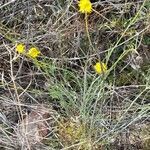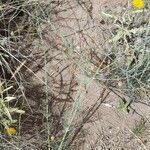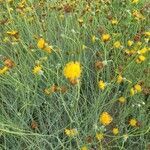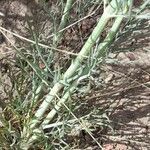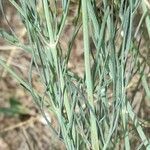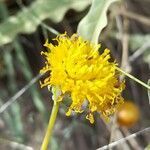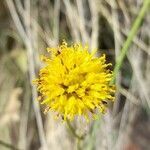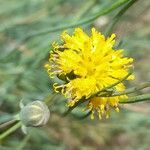Of the Great Plains, has been reported as adventive in Ill. and Mo. It is a glabrous perennial with the lvs once or twice pinnatifid into slender segments; the discoid (or inconspicuously radiate) heads terminate long, naked peduncles; the outer invol bracts are very short, and the inner ones are connate to the middle or above; the wingless achenes have a pappus of 2 retrorsely barbed awn-scales. (T. gracile)
A herb. It has underground stems or rhizomes. It can keep growing from year to year. It grows 40-60 cm tall. The leaves are divided 2 or 3 times. The segments are 10-23 mm long by 0.2-0.6 mm wide.
